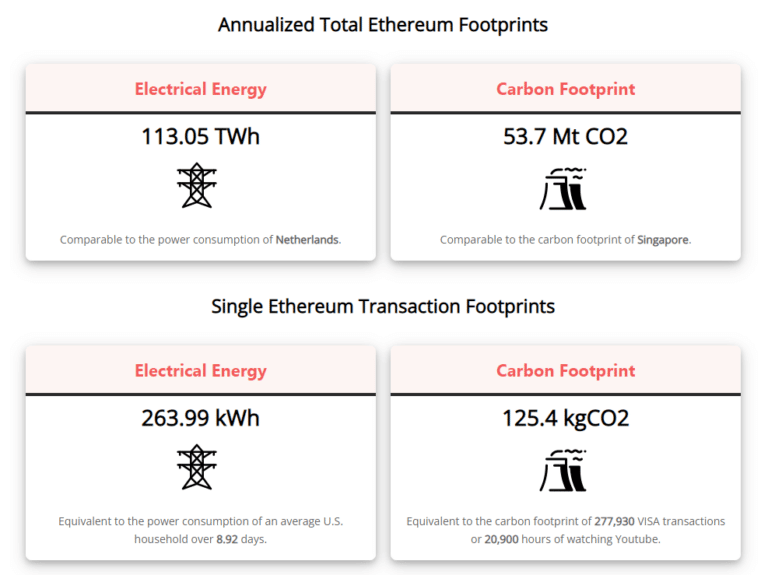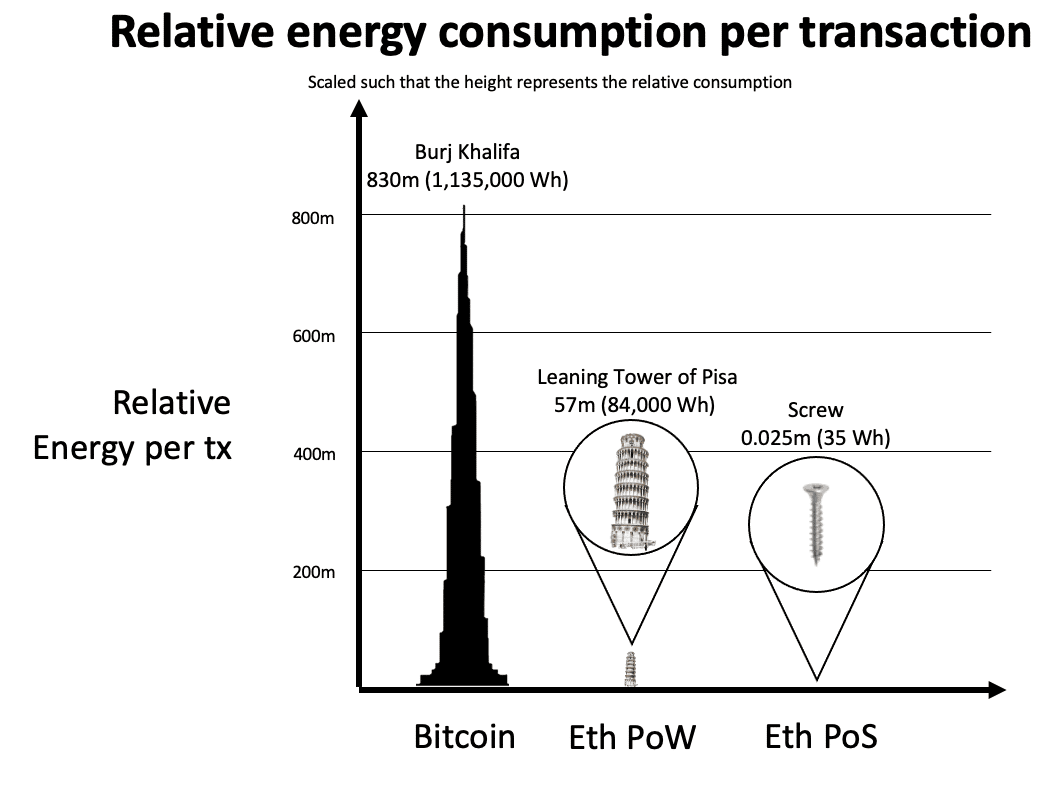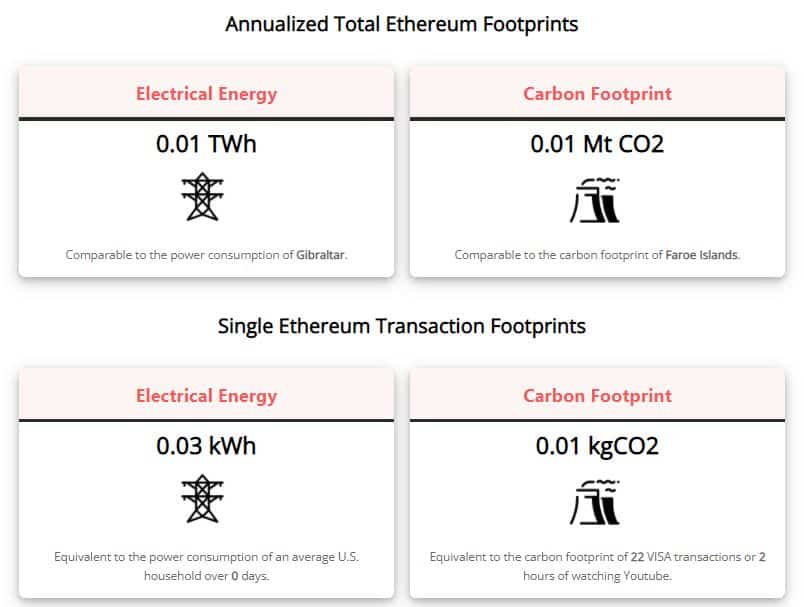Ethereum won the spotlight with the Merge, which cut the crypto’s energy use and carbon footprint more than expected by 99.99%.
The second-largest cryptocurrency – Ethereum – recently eliminated its energy consumption overnight by shifting to a new “proof of stake” blockchain system called the Merge.
Designed to drastically cut down the network’s overall energy use, the upgrade has indeed done just that.
Initial estimates of energy consumption reduction is about 99.95%. But the Merge was able to go beyond that with 99.99% less energy use than estimated.
The software upgrade also cut Ether’s carbon footprint by the same figure.
Ethereum Energy Use Before Merge
The so-called “Merge” was executed as the energy intensity of cryptocurrency protocols such as Bitcoin and Ethereum is a hot issue in the U.S.
In fact, the White House published a report detailing the energy impacts of crypto mining operations.
Crypto miners, including Bitcoin and Ethereum, use an energy-intensive consensus mechanism called “proof of work” (PoW).
- Proof of Work is estimated to account for about 0.9% to 1.7% of all U.S. electricity use in 2021.
Earlier, the PoW mechanism required miners to work with high-powered computers to solve complex puzzles to earn tokens or Ether.
Ethereum used to run on the same unsustainable PoW mechanism as Bitcoin. This consensus system is so inefficient as shown below.
Ethereum Footprint Before Merge

- Prior to the Merge, a single Ethereum transaction consumed about 264 kWh of energy according to Digiconomist data.
That’s equal to the consumption of an average U.S. household over 9 days.
What’s worse is its carbon footprint; the same single Ethereum transaction emits 125 kgCO2.
This emission is the same as watching YouTube for 20,900 hours! That’s equal to over 2 years of watching.
At the same time, the total annual Ethereum footprint is almost 54 Mt CO2. That’s equal to the emissions of the entire country of Singapore.
- In fact, if Bitcoin and Ethereum were one country, estimates put their combined power use at 12th in the world with over 300 TWh per year.
These footprints were slashed after Ethereum shifted to the “Proof of Stake”(PoS) crypto model of mining.
Ethereum Footprint After the Merge
PoS doesn’t need computers and offers a greener, more energy-efficient way for crypto users to deposit their Ether. They call this process “staking”.
With PoS after the merge, there’s no longer a network of energy-intensive mining devices that compete with each other to make the next block for the underlying blockchain. Rather, wealth plays a major role in the block creation process with PoS.
Instead of using expensive GPUs and high specs, users need only a basic laptop and a stable internet connection.
The result is a massive reduction in power use by Ethereum.
To compare Ethereum’s PoS with PoW and Bitcoin’s power use, here’s a good illustration from the crypto firm itself.

When it comes to emissions, the crypto’s footprint for a single transaction also dropped to only 0.01 kg CO2. That corresponds to only 2 hours of watching YouTube.
For its annual total carbon footprint, it went down from 54 Mt CO2 to only 0.01 Mt CO2.
Ethereum Footprint After Merge

For some industry experts like the ConsenSys, it remarked that the Ethereum’s Merge is the “biggest decarbonization in the history of tech”.
If the company seeks to get carbon credits from such a massive reduction in its emissions, that would be a huge amount. One carbon credit is equal to one ton of carbon avoided from getting emitted.
Also, carbon-backed crypto tokens have been gaining more traction recently.
And though other blockchain networks like Bitcoin, Ravencoin, and Ergo have seen growing hash rates after the Merge, their massive energy use is not tied to Ethereum anymore.
As such, Ethereum manages to shed the environmental issues that continue to shake the world of cryptocurrency.
One board member of the Enterprise Ethereum Alliance said about the new PoS mechanism:
“This upgrade is very significant and I believe it will allow enterprises to consider public Ethereum blockchain approaches where they did not prior.”
Looking ahead, many predicted a continued push to green crypto mining operations in the U.S. as the world races to net zero emissions.

